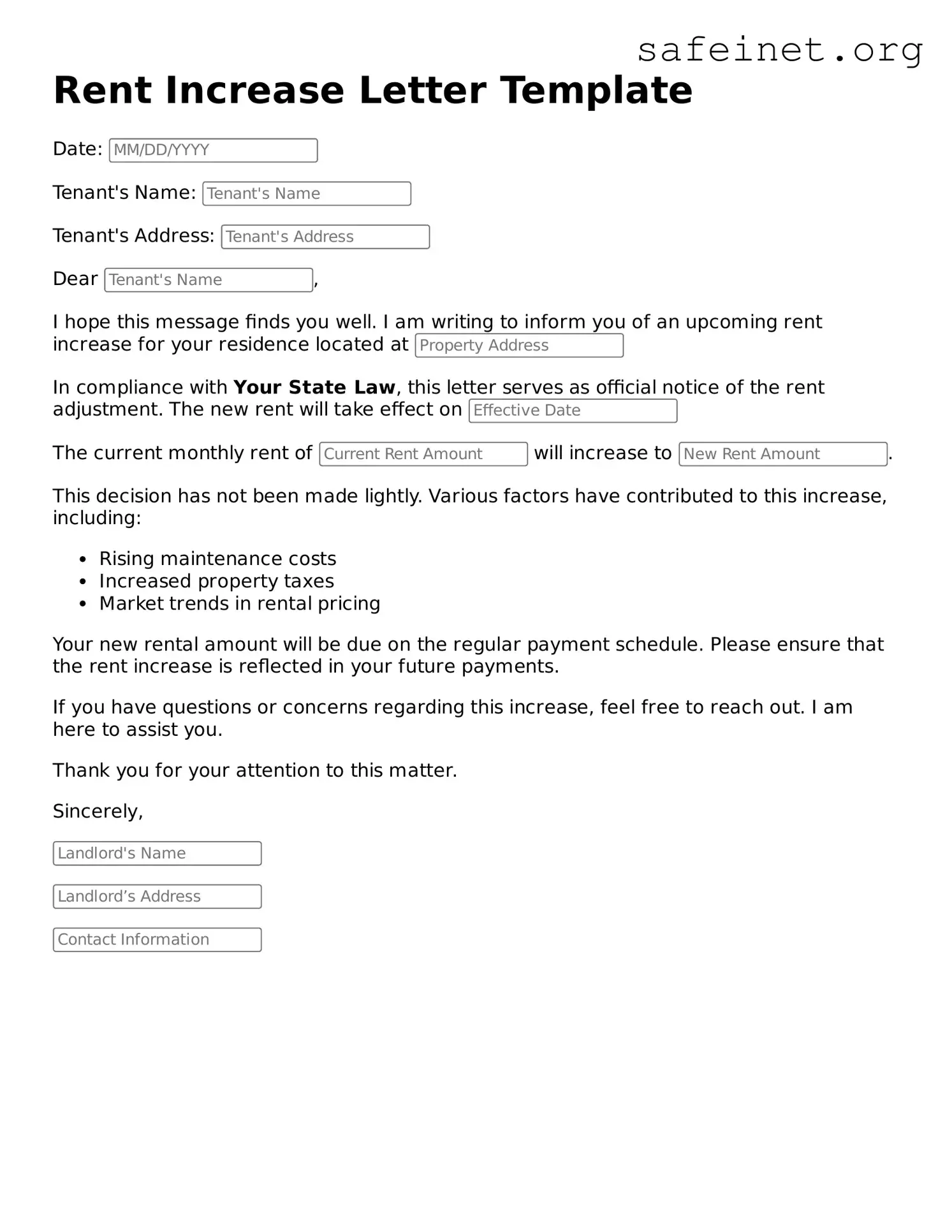The Rent Increase Letter shares similarities with the Lease Renewal Letter. Both documents serve as official notifications and express the intent of the landlord to implement changes affecting the rental agreement. A Lease Renewal Letter typically outlines new terms after a lease has expired, while the Rent Increase Letter specifically focuses on changing the rent amount. Each is crucial for maintaining clear communication and ensuring that both parties understand their responsibilities moving forward.
Another closely related document is the Rent Payment Reminder. This reminder, like the Rent Increase Letter, serves as a formal communication from the landlord to the tenant. While the Rent Increase Letter informs tenants about a change in pricing, a Rent Payment Reminder prompts tenants to submit their regular rent. Both documents play essential roles in the rental process, reinforcing the need for timely payments and adherence to contractual obligations.
Additionally, the Notice to Quit is another document that resembles the Rent Increase Letter in that it communicates the landlord's intentions. However, this notice informs the tenant that they must vacate the premises, often due to lease violations. The tone may differ, as a Notice to Quit typically conveys urgency and finality, while the Rent Increase Letter invites continued tenancy under new conditions. Both documents are critical in managing the landlord-tenant relationship and ensuring compliance with rental agreements.
The Maintenance Request form is another document that shares attributes with the Rent Increase Letter. Both facilitate communication between landlords and tenants, but serve different functions. While the Rent Increase Letter addresses financial aspects of the lease, the Maintenance Request focuses on physical property issues requiring attention. Effective communication about these matters is essential for maintaining harmonious living conditions.
The Security Deposit Return Letter also bears a resemblance to the Rent Increase Letter. Both documents establish official communication between the landlord and tenant. A Security Deposit Return Letter indicates the final accounting of the deposit after a tenant vacates, detailing deductions for damages or cleaning, if necessary. Each letter aims to clarify financial expectations and ensure transparency in the rental relationship.
The Eviction Notice is similar to the Rent Increase Letter in it also communicates significant information about the rental agreement. An Eviction Notice informs a tenant that they must vacate the premises due to lease violations or non-payment. While the Rent Increase Letter seeks to retain tenants by adjusting financial obligations, the Eviction Notice represents a more drastic change in the landlord-tenant dynamic. Both require careful attention to legal protocols and clear communication.
The Move-Out Notice can also be found alongside the Rent Increase Letter in terms of similarities. This notice is issued by tenants to inform landlords of their intention to vacate the property. While the Rent Increase Letter addresses the landlord's intentions regarding rent, the Move-Out Notice focuses on the tenant's plans, fostering a sense of mutual understanding. Each document plays a role in coordinating the end or alteration of a rental agreement.
The Rent Adjustment Agreement is another document akin to the Rent Increase Letter. This document outlines formal changes to the lease agreement, particularly focused on rent factors. Like the Rent Increase Letter, it lays out the new rental terms and conditions, ensuring that both parties understand and agree to the adjustments. Clarity and mutual consent are crucial for maintaining a positive rental experience.
Lastly, the Tenancy Agreement Renewal form relates closely to the Rent Increase Letter as both involve updates to the existing rental arrangement. The Tenancy Agreement Renewal may explicitly state new terms, including rent adjustments. Similarly, the Rent Increase Letter signifies the intention to continue the tenancy with altered financial terms. Both ensure ongoing communication between parties and promote legal compliance within rental agreements.
